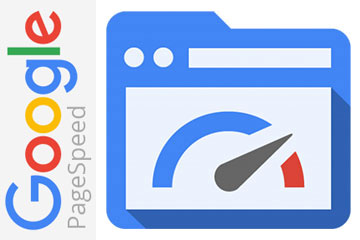Google’s page speed is the new key of SEO success now days. This post will help you in finding and resolving Google Page Speed Test Tool insights and issues. We will explain you how to score perfect 100/100 and increase search engine presence.
[alert-announce]Note – It is not mandatory you score perfect 100/100. In short your website should be fast enough for better user experience.[/alert-announce]
There are many online and browser plugins available for page speed test. Running speed tests with tools like Google PageSpeed Insights, Pingdom, YSlow speed test are always a good way to help gauge your website’s performance. You can also evaluate your webpage speed in your browser like Google Chrome, and Mozilla Firefox. So before testing speed of your webpage you should test your internet speed. Because your internet speed will determine how slow and fast your website is loaded.

There are few WordPress Plugins available for page speed insights and performance. It is also noted that one plugin is not enough for complete page speed optimisation. So you have to tweak a little bit with your .htaccess file also along with one of more WordPress page speed plugins.
Table of Contents
Tips to Score 100/100 in Google Page Speed Test Tool
PageSpeed Ninja is good plugin which optimise your webpages up-to great level. But try its features carefully, it can impact your website look and feel too. As a result you can score high up to 100
WordPress Cache Plugins
Try One of the best WordPress cache plugins so that dynamic pages can be served fast.
Optimise Images – Google Page Speed Test
Optimize your website’s images so that it can be downloaded fast. Try “save for Web” feature if you are creating image in PhotoShop. Use Wp-SmushIt plugin to optimise images in WordPress site. You can also use ShortPixel Image Optimizer wordpress image optimisation plugin.
Minify Javascript and CSS
It will be good if you use minimalist WordPress theme which uses minimal CSS and JS files. If you have other CMS website or static website, try to use minimum CSS and JS files. Also minify these files with tools available online. If you have WordPress site try WordPress Autoptimize plugin.
- Optimize HTML Code
- Optimize JavaScript Code
- Optimize CSS Code
Render-Blocking Resources Above the Fold
You should use async javascripts in your website. So there should not be any javascripts/files which may impact rendering of your website.
Leverage Browser Caching – Google’s Page Speed Insights
You can achive this by editing .htaccess file in your website. Use below code, just copy and paste it in your htaccess file and save.
<filesMatch “.(ico|pdf|flv|jpg|svg|jpeg|png|gif|js|css|swf)$”>
Header set Cache-Control “max-age=84600, public”
</filesMatch>
Enable Compression
If you are using any good CDN (content delivery networks). This feature will be available by default. Hence PageSpeed Ninja wordpress plugin allows users to enable compression.
Reduce server response time
This is totally dependent on your hosting server and hosting plan. So you can reduce server response time by using any CDN provider. Or choose any of the best hosting service provider.
Remove Query Strings from Static Files
Another optimise thing we recommend is to remove query strings from your static resources. Resources with a “?” which suffix js and css files in different CMS. If youy are using WordPress as CMS you can use this WordPress query string plugin Query strings remover.
Now test your website with Google’s Page Speed Test Tool of Pingdom test tool. Hence you can optimise your website’s speed.

